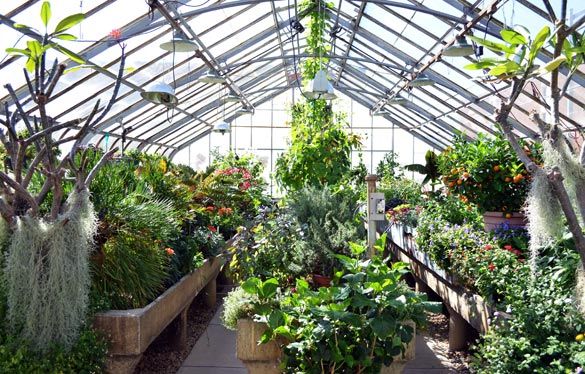SIU greenhouse construction affects two colleges

March 30, 2015
A campus greenhouse that holds plants from around the world—some of which are almost 75 years old—will be renovated this year.
Greenhouses used by the colleges of agriculture and science are due for construction in the upcoming months.
The estimated total budget for the project is $4.6 million, which is divided among three main sources. The state provided $2.4 million, the Facility Maintenance Fee paid by students supplied $1.2 million and the remaining $1 million was raised by the College of Agriculture and College of Science, said Phil Gatton, the director of Plant and Services Operations.
Advertisement
Capital Development Board, an state agency focused on construction, manages this project. The differences between the projects are based on the level of construction being performed on each building and which department they service.
The College of Agriculture’s greenhouse—situated behind the agriculture building— was constructed in 1955 and serves as a teaching facility for the students and teachers of SIU. Gatton said the maintenance department has performed many cosmetic alterations, but it is still an outdated building.
“There is a major construction project in the next 10 years that is basically going to rebuild Ag, and these greenhouses we just couldn’t wait any longer,” he said.
Plans for the College of Agriculture involve the complete demolition of the original structure apart from the “head house” that is original to the building.
During the construction, Amy Boren, a professor in the College of Agriculture, said students will still have access to a space for research facilities and the college will still teach the same courses in an alternate space.
Issues with the greenhouse include structural problems with the general layout, the mechanical systems and the glass and framing because of their age. Without mechanical systems, the staff cannot control temperature or moisture, Gatton said.
Demolition will begin in late summer, and the project will take eight to 12 months.
Advertisement*
The other greenhouse on campus due for construction is the College of Science’s plant biology greenhouse, situated behind the Life Science II building.
The building’s existing structure will be renovated and its interior updated. Construction for this project is slated to start in July and be finished in six months.
The first building was built in the 1940s and the rest added in the 1950s. The main structure, the brick base and the framing that holds the glass panes will be kept during the construction, said Stephen Ebbs, a professor in the College of Science.
The interior modifications include a new cooling system, lighting and improvements to the existing heat system. All these systems will be automated with sensors, which read and control the temperature and moisture level in the greenhouse.
Richard Cole, facilities operations manager for the Plant Biology greenhouse, said the updates will make regulating the environment more convenient.
“Automation will help us a little because someone still has to be here seven days a week,” Cole said. “The way that it is right now, everything is hand cranked, so as the day progresses the vents must be opened and closed to regulate the temperatures.”
Another improvement on the functionality of the greenhouse is to make the building compliant with the Americans with Disabilities Act. This is an issue because the greenhouse is open to the public, student groups and clubs.
“We want this building to be as readily accessible as it needs to be,” Ebbs said.
Plants and students alike will benefit from this renovation.
This greenhouse is a valuable, living collection, like a mini-botanical garden, Ebbs said. Many undergraduate and graduate classes take trips to the greenhouse, and students with research projects can work inside with the existing plants.
Students are also hired to work in the greenhouse to gain practical experience taking care of these plants and learning about the different species.
Each area of the greenhouse is specialized and represents a different type of ecosystem.
“The structure of this greenhouse is E-shaped, the main house or the backbone is tropical foliage, the south house is desert and succulents, the middle house is rainforest and ferns, and then the last house is a research and horticultural work area,” Cole said.
Ebbs said the renovations could lead to more plants being housed in the building.
“A goal of this renovation is to have better control over the climate in the greenhouse, so there is less unpredictability so we can have less accidental losses,” Ebbs said. “Ideally, we could not only maintain our current collection but even expand a bit further.”
Heather Cachola can be reached at [email protected]
Advertisement






